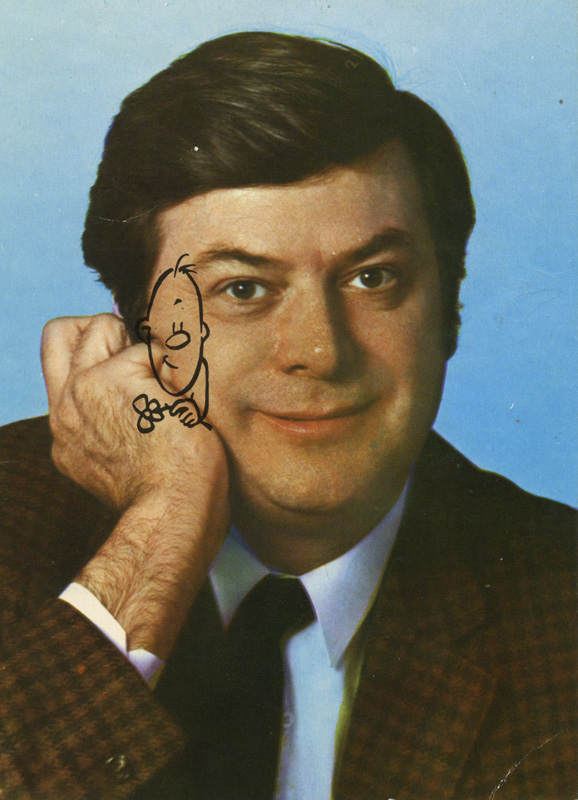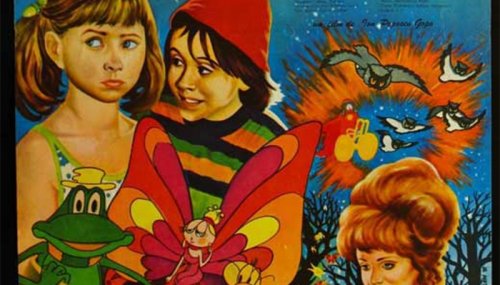Synopsis
Oache, a frog meets old acquaintances: a butterfly, Omide and a fire-fly, Scăpărici. Together they watch two girls playing in a meadow, Maria and Mirabela. Oache remembers an adventure when they all first met each other, and Oache begins to tell the story.
The story begins with Oache meeting the Fairy of the Forest who stopped to drink fresh water at his spring. He is surprised to receive thanks from the Fairy for the good water and, being impressed by the visit, he asserts that frogs are not good for anything. In punishment for the lie, the Fairy of the Forest freezes Oache's legs in the stream.
Two sisters playing with a ball, Maria and Mirabela come across Oache whose legs are frozen and decide to help him. They are helped by Oache's friends, a bunch of funny frogs. They cheerfully dance and melt the ice around Oache, then the girls take Oache with the remaining ice with them. They want to go to the Fairy of the Forest to cure and release Oache.
On the way to the Fairy the girls meet other fantastic beings who need help. They meet Scăpărici, a fire-fly whose shoes cannot glow because when he lights them, they set on fire. Then they meet the King of Caterpillars whose daughter Omide becomes a beautiful butterfly, but she is too afraid to fly.
The girls must get to the Fairy of the Forest before midnight, but time is running out. They visit the strict Lord of Time who does not want to stop the time for them for 5 minutes, so Maria and Mirabella sing a lullaby to him so that he can fall asleep, and time can be stopped. But, the sleeping lord had his arm on Maria's dress, therefore Mirabela hurries to the fairy by herself. But when she reaches the destination, it appears that when the time stopped, the Fairy of the Forest and all of her fantastic companions, including the 4 Seasons, have fallen asleep as well.
After the time starts again the awaken Fairy is surprised to see that the old natural order has been disrupted and, as a consequence, the order of the seasons changed, Summer falling asleep near Winter. Because of that the Seasons got a serious cold, therefore the Fairy needs hot tea to cure them. But there is no water available in her kitchen. In order to prepare the medical tea to cure the sick Seasons, the Fairy gets help from the girls who run to Oache's springs. And there Oache helps them to choose the right source with the purest water. As soon as Oache understands that he can be useful, the ice on his feet thaws like magic. Maria and Mirabela then go to prepare the tea, but they have no matches to light the stove. They are helped by Scăpărici, setting fire to the stove, but his shoes start to burn. Being worried for Scăpărici, the butterfly Omide flies up and extinguishes the flames with her wings. Mirabela helped by the Fairy gives Scăpărici new shiny shoes.
The final song tells how it is fine to live when friends are near. After that it appears that the adventure was all a girls' dream, the Fairy of the Forest turns into their mother, and the Lord of Time into their father.

Sections & Films
MARIA, MIRABELA
| Original Title | Aka Mariya, Mirabela |
| Italian Title | Maria, Mirabella |
| Category | Official Competition |
| Section | Competition |
| Tipology | Animation, Feature Film |
| Duration | 68' |
| Production Year | 1981 |
| Nationality | Romania |
| Directed by | Ion Popescu-Gopo |
| Screenplay | Ion Popescu-Gopo |
| Music | Eugen Doga |
 ION POPESCU-GOPO
ION POPESCU-GOPO
Ion Popescu-Gopo (1 May 1923, Roești, Vâlcea) was a Romanian graphic artist and animator, but also writer, movie director and actor born in Bucharest, Romania. He was a prominent personality in the Romanian cinematography and the founder of the modern Romanian cartoon school. He was, together with Liviu Ciulei and Mirel Ilieşiu one of the few Romanian film artists who won an award at Cannes in the 20th century. His film "Scurtă Istorie" (A Brief History) won the Short Film Palme d'Or for best short film in 1957. His 1965 film The White Moor was entered into the 4th Moscow International Film Festival where he won the award for Best Director. In 1969 he was a member of the jury at the 6th Moscow International Film Festival. In 1977 he was a member of the jury at the 10th Moscow International Film Festival.
Ion Popescu-Gopo attended (but never graduated from) the Academy of Fine Arts in Bucharest. He also attended animation courses in Moscow. He made Maria, Mirabela which is a Romanian-Russian co-production.
His career started as a designer and cartoonist in 1939, publishing caricatures and editorial cartoons in newspapers. 1949 brought his debut in the film industry with "Punguţa cu doi bani" (Bag with two coins). Since 1950 he started working for Studioul Cinematografic Bucureşti (Cinematographic Studio Bucharest) in the animation department, that later broke into a separate animation studio, Animafilm.
His most known cartoon character is a little black and white man sometimes referred to as "Gopo's Little Man" after his creator. Later in his life Popescu-Gopo confessed that he tried to start an "anti-Disney rebellion". Unable to surpass Disney's animation characters in color and beauty, Popescu-Gopo tried to be more profound in message and substance and simplify the form and techniques used. Unlike Disney's cartoon characters, Popescu-Gopo's cartoon characters were black and white, designed in simple lines.


